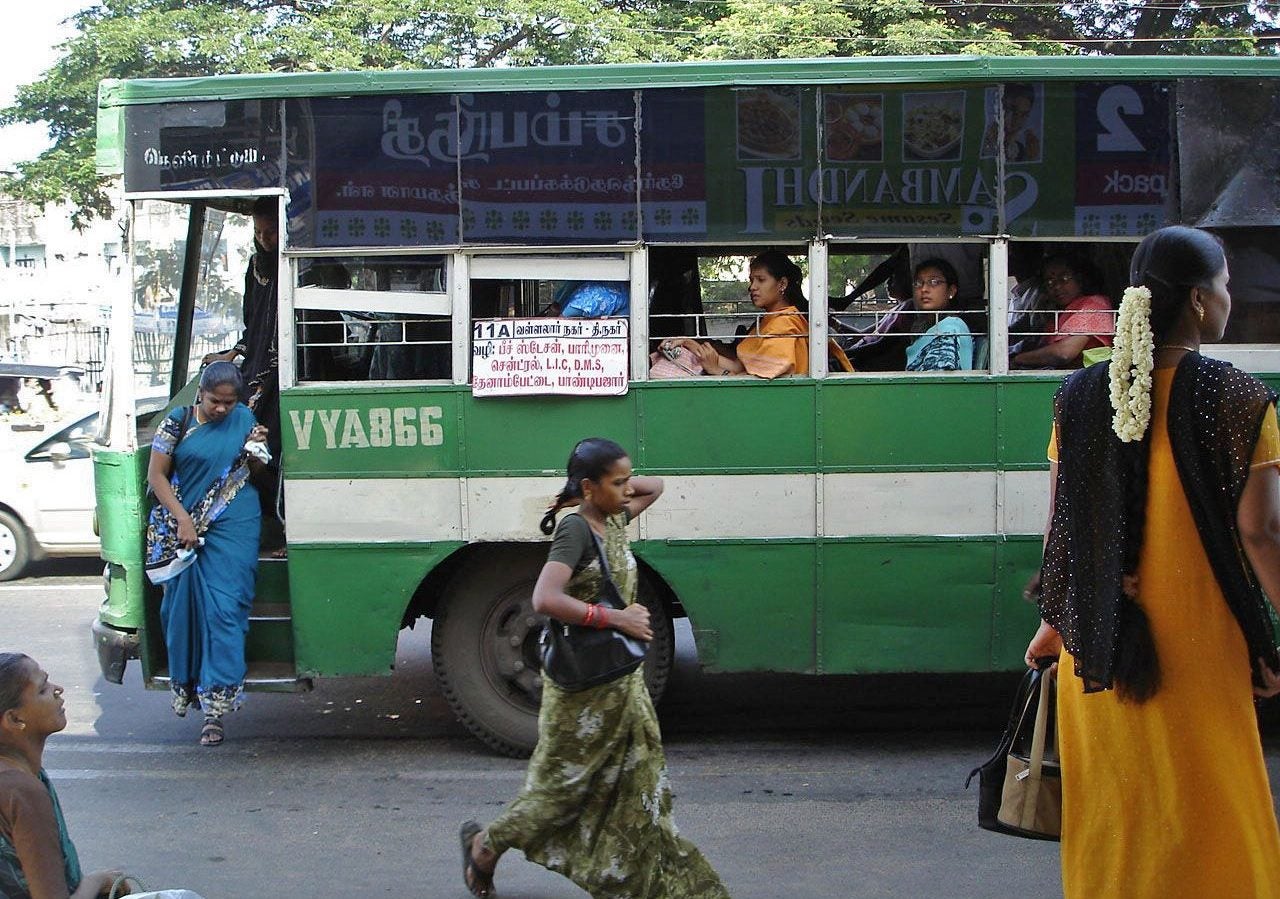Sweat, sambar, and Anna Salai: A ride on Chennai’s rush-hour buses
Chennai takes news-reading pretty seriously.


Chennai takes news-reading pretty seriously.
My dad reads the papers cover-to-cover sipping on his morning filter coffee, the watchman of my housing complex browses through them during his breakfast, and students and office-goers do it on their commute.
And then there are the city’s public bus drivers—they read newspapers at the wheel.
However, the vehicles they drive—the rickety and unimaginably overcrowded state-owned Metropolitan Transport Corporation (MTC) buses—are the lifeblood of the city.
I hadn’t been on one of these crazy rides since I graduated in 2010. I never even thought I’d return either. But then.
D-Day
The prospect of boarding an MTC bus, even for an assignment, gave me the jitters.
Chennai is no Mumbai or Delhi in terms of population, but buses here are India’s most crowded. So crowded that the vehicles, each carrying 1,300 persons per day on average, are perpetually slanted due to the weight. Applying brakes doesn’t usually lead to an immediate halt as the vehicle always needs a few yards more. And they can be dangerous, too, given that at least one person dies every 10 days due to unsafe footboard travel.
Yet, buses remain the city’s favourite mode of commuting, given their vast network, affordability, and endearing eccentricities (How often has a Magsaysay award-winning musician performed on a public bus, free of cost?).
So, on July 20, I headed out at around 8am. I was walking on an empty stomach, and effortlessly picked up the aromas of dosa, vada, and rasam (all classic south Indian preparations) wafting out of neighbourhood kitchens. At one such doorstep, where the sambar (a curry) smelt sub-par, I fought the temptation to advise the lady of the house on the missing ingredient. I had a bus to catch.
The plan was to board a bus from my cosy residential neighbourhood of Besant Nagar in south Chennai to the city’s spine, Mount Road or Anna Salai, that stretches across the city length, and is home to some of its oldest commercial buildings and offices.
Along the way, I was joined by other office-goers and school and college students.
Approaching the Besant Nagar terminus, I realised the bus I planned to take was full already. I kicked myself, but boarded anyway and found a safe spot to stand. A couple of minutes later, we moved.
The ride
Almost 10 minutes in, there was no sign of the pot-bellied conductor. He was glued to his seat at the back. Then, three or four stops down, he bellowed from there: “Aaaaan…tickets.” He wasn’t moving even then.
As usual, the passengers swung into action—taking out cash and passing it, along with the name of their destinations, all the way back to the conductor. Usually, the last person in the link is tasked with keeping track of who is headed where. So he or she also returns the balance amount wrapped in the ticket to the right person. How this task is seamlessly performed every day beats me.
The crowd swelled in the meantime: College students with their backpacks and dangling dupattas (part of a woman’s dress ensemble), techies with their laptop bags, vegetable vendors with their reed baskets, and other colourful characters swept in.
As more people squeezed their way in, another Chennai phenomenon manifested. The backpacks began to make their way to the laps of those sitting, no questions asked, no requests made. It was simply assumed. Even little kids offered to hold bags twice their weight.
By now the footboards were fully occupied, but the occupants always made way for those boarding or alighting. This regular movement was often accompanied by a warm customary greeting to even strangers: “Saaptiya?” (Have you had breakfast?) Sometimes, they’d even help the old and infirm by simply picking them up and shoving them in.
This footboard gang can get unruly, too. Like it did on that day. The conductor then finally moved. He got to the middle of the bus and yelled, “Get off and take the next bus or get inside.” None really cared, though.
By the time I got off at the Nandanam locality at around 8:45 am, I was drenched in sweat and my hair was in a mess. I was deeply thankful that I didn’t have an office to go to every day.
On the trip back home that evening, I opted for the newly-inaugurated Metro.
Unlike in the morning, there was just one other person awaiting the train. So uneventful was the ride that I nodded off by the time I got to my destination. The state has spent over Rs16,000 crore ($2.4 billion) on the project so far, but the trains see only around 30,000 people commuting on them every day, much lower than the 500,000 that was estimated during the planning stage. The city’s local train network, the elevated Mass Rapid Transit System operated by the Indian Railways, isn’t popular either.
These modes will need a much more vast network to gather even a fraction of the excitement that the MTC kicks up during peak hours.
And it will take much more for them to gather a similarly crazy and endearing group of commuters.
Feature image by PlaneMad on Wikimedia Commons, licensed under CC BY-SA 2.5.
This piece is part of Quartz’s The Commute series in which we bring you the quintessential experience of commuting during peak hours in some of India’s biggest cities. We welcome your comments at [email protected].